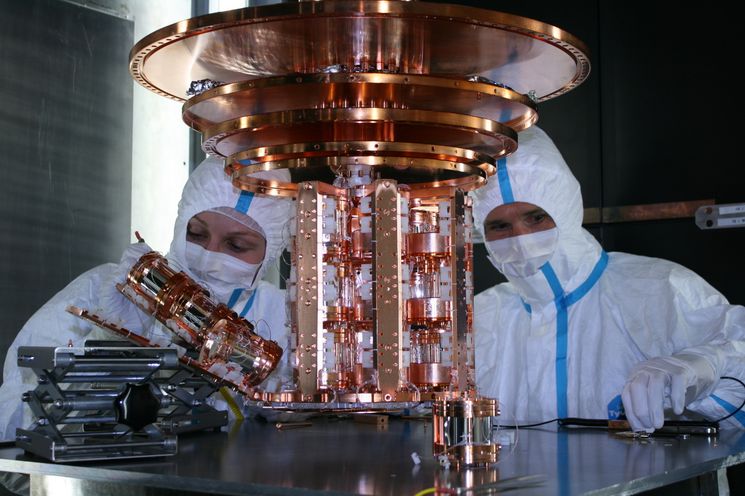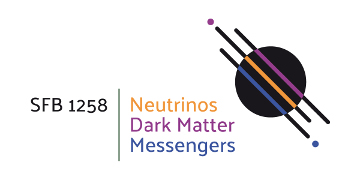Hunting for dark matter particles
The physical nature of dark matter remains one of the major unsolved mysteries of the universe, but one that conceivably will be settled in a laboratory on Earth. If dark matter indeed consists of a new type of weakly interacting elementary particle, or perhaps of course several different ones, it or they probably cannot hide forever from experimental enquiry. These particles must have been produced in the early universe with an abundance such that their mass density today ist about five times that of ordinary matter. Processes related to their primordial production allow, at least in principle, to also find them in the laboratory. These general ideas are not new and have been pursued by many groups world wide. Pushing the frontier of experimental dark matter searches therefore requires pushing the frontiers of experimental methods in several directions.
We use the CRESST setup to push the classic idea of finding weakly interacting massive particles (WIMPs) by their rare interactions in a laboratory target (Project D01). Resolving ev recoil energies will allow us to achieve new levels of sensitivity in the low-mass (GeV range) dark matter particle regime and ultimately reach the "neutrino floor" caused by backgrounds from astrophysical neutrino fluxes.
Dark matter particles might easily show up in the production of the LHC at 13 TeV. Applying new analysis tools to this data within three classes of WIMP models by a new group of collider phenomenologists at TUM can reveal signatures or provide new limits, connecting dark matter searches with forefront particle research at the energy frontier (Project D02).
Particularly for heavy WIMPs, subtle quantum effects in their production or detection processes require new theoretical tools. A new collaboration of theorists at TUM will develop methods more familiar from collider physics (Project D04).
Another classic idea to search for dark matter, unifying high-energy neutrinos astronomy with particle phenomenology in Project D03, uses the "indirect signature" of high-energy annihilation products, where we use IceCube data to extract possible signatures.
A new search for a completely different type of dark matter candidate, the axion, is proposed in Project D05 in the form of a layered dielectric haloscope. If the proposed feasibility and optimization strategies are successful, and if complementary theoretical investigations remain optimistic about the envisioned mass range, in future this project could lead to a full-scale cosmic axion search.



